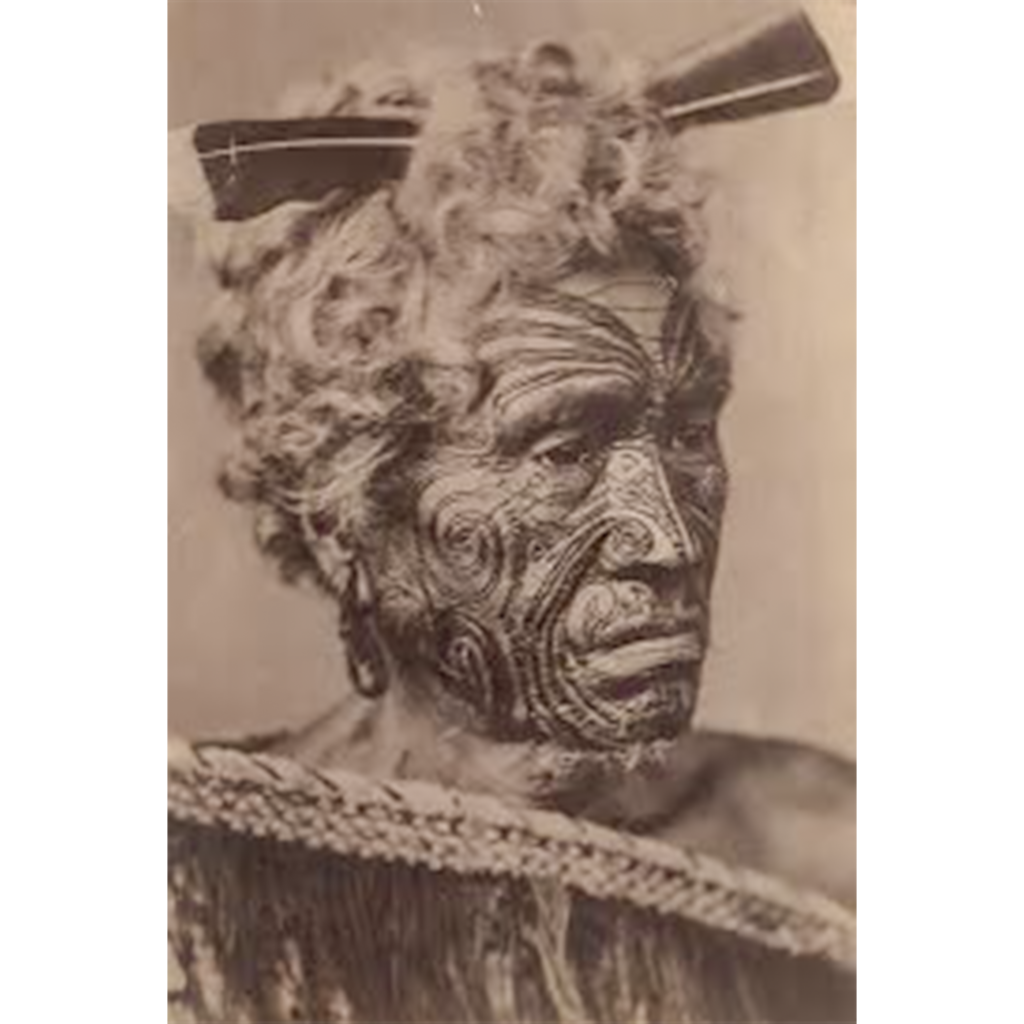
The tribal tattoos of the people of the southern oceans, including the Maori, Samoans, and Polynesians, are diverse and deeply symbolic. Different types and styles represent various aspects of life, culture, and the natural world.
These people’s tattoos are closely related but distinctive in terms of their origins, designs, and cultural significance. They all belong to the broader Polynesian tattoo tradition, but each group has its own unique and recognizable tattoo style. We’ll explore the motifs, cultural symb
ols and cultural significance of Maori, Samoan, and Polynesian tattoos.
Traditional Polynesian Tattoos (Tatau)
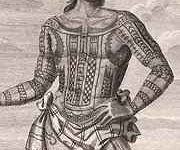
There was no written language in ancient Polynesia, so tattoos became a representation of a person’s identity, personality, and life story. Polynesian culture encompasses all the people of Oceania, including the Maori and Samoans, which is why tattooing spread among the people of the region and why some of the styles and symbols used look similar.
Tatau is the original term for tattoos in Polynesian culture. These tattoos were historically used to represent social status, tribal affiliation, and rites of passage. They are still often applied using traditional tools and techniques, such as bone chisels and mallets.
Common Elements: Geometric shapes like triangles, and other symbols and patterns, such as lines, spirals, and waves are used in Polynesian tattoos. These elements symbolize facets of nature and humanity, such as the ocean, land, animals, and family.
Samoan Tattoos
Tonga and Samoa are closely related culturally, and both Tongan and Samoan warriors in ancient times were intricately tattooed with tattoos from the waist to the knees in geometrical patterns. With the rise of Christianity in the region, tattooing slowly disappeared in Tonga but remains a significant part of the culture in Samoa.
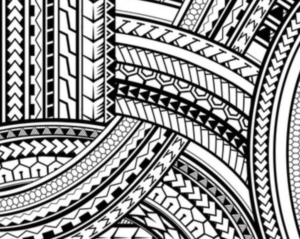
Samoan tattoos are known for their bold, dense patterns that cover large areas of the body, often the legs, arms, or back.
the Samoan tattoos also contain key symbols that are important in their culture. These symbols include:
- Mano (shark teeth): Represents protection and strength.
- Afi (fire): Symbolizes passion, courage, and the warrior spirit.
- Tatau (tribal markings): A symbol of authority, respect, and coming-of-age rituals.
Maori Tattoos
Maori tattoos are also known as Ta Moko. Long ago, they represented particular Maori tribes, but as tribe members mixed with those of different ancestries and backgrounds, the tattoos came to represent other meanings, including strength, travel, prosperity, family and one’s career path.
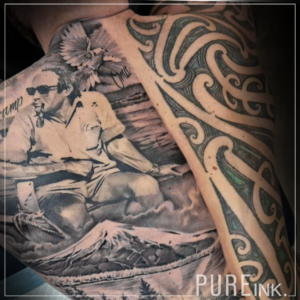
Originating from New Zealand, Maori tattoos are distinctive with their swirling, spiral-like patterns and the use of negative space. The kirituhi (tattoo art) tells personal stories about a person’s ancestry, achievements, and spiritual connection.
The key symbols of Maori tattoos include:
- Koru: A spiral that represents new beginnings, growth, and harmony.
- Hei Tiki: A small figure representing a guardian spirit or ancestral connection.
- Manaia: A mythical creature often depicted as a bird, fish, and human, symbolizing protection and balance.
The tattoos are commonly found on the face (especially the chin and forehead), arms, and legs. The facial tattoo, known as Moko, is one of the most recognizable Maori styles

Hawaiian Tattoos
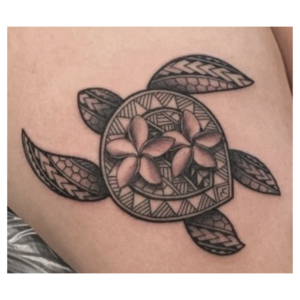
Hawaiian tattoos are a beautiful expression of a strong connection with nature and family, with designs focused on spiritual beliefs and family ties. Hawaiian tattoos often include motifs inspired by the ocean, animals, and plants.
- Key Symbols:
- Honu (sea turtle): Symbolizes protection, longevity, and guidance.
- He’e (octopus): Represents adaptability and strength.
- Pueo (owl): Associated with wisdom and guidance.
Differences Between Tribal and Neo-tribal Tattoos
A tribal tattoo refers to a traditional design often based on patterns from Indigenous cultures, while a neo-tribal tattoo takes inspiration from traditional patterns and uses elements of the tribal design style but incorporates more modern elements like geometric shapes, abstract designs, and sometimes even modern symbols and shading, creating a contemporary twist on the classic tribal style.
Essentially, a neo-tribal tattoo is a modern interpretation of the traditional tribal tattoo style with more creative freedom in design and execution.
Tattoo Placement
Where a Polynesian tattoo is placed on the body has cultural significance. Although people are free to put tattoos anywhere on their body, the tattoo’s location has meaning. The upper part of the body is related to heaven (Rangi), and the lower part is related to the earth (Papa). The body is divided into:
- Head
- Higher trunk
- Lower trunk
- Upper arms and shoulders
- Lower arms and hands
- Legs and feet
- Joints
Each of these areas has a specific meaning in relation to Rangi or Papa. Tattoos are also accorded a gender, with the left side of the body associated with women and the right with men.
Celebrities with Polynesian Tattoos
Polynesian tattoos are becoming more popular due to their greater exposure in movies and TV by celebrities such as Dwayne (The Rock) Johnson, Jason Mamoa, and Taika Watiti.
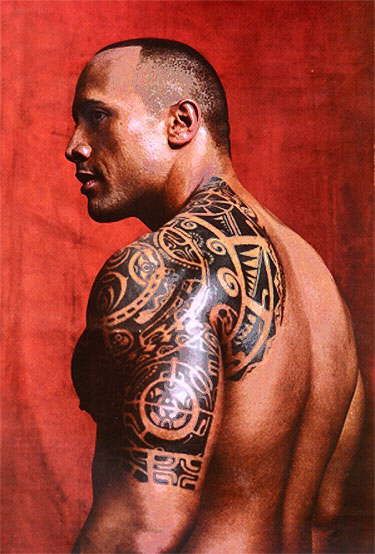
Choose Pure Ink for Your Tribal Tattoo
At PUREInk, we are committed to the principles of authenticity and respect. We listen to our clients and work to artistically bring their personal journey into focus, empowering and enabling people to express themselves fully.
